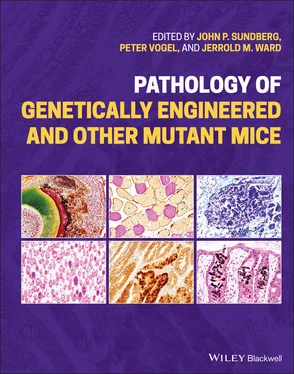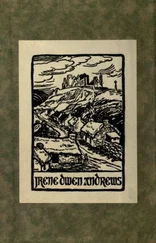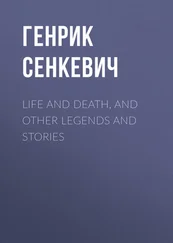Pathology of Genetically Engineered and Other Mutant Mice
Здесь есть возможность читать онлайн «Pathology of Genetically Engineered and Other Mutant Mice» — ознакомительный отрывок электронной книги совершенно бесплатно, а после прочтения отрывка купить полную версию. В некоторых случаях можно слушать аудио, скачать через торрент в формате fb2 и присутствует краткое содержание. Жанр: unrecognised, на английском языке. Описание произведения, (предисловие) а так же отзывы посетителей доступны на портале библиотеки ЛибКат.
- Название:Pathology of Genetically Engineered and Other Mutant Mice
- Автор:
- Жанр:
- Год:неизвестен
- ISBN:нет данных
- Рейтинг книги:3 / 5. Голосов: 1
-
Избранное:Добавить в избранное
- Отзывы:
-
Ваша оценка:
- 60
- 1
- 2
- 3
- 4
- 5
Pathology of Genetically Engineered and Other Mutant Mice: краткое содержание, описание и аннотация
Предлагаем к чтению аннотацию, описание, краткое содержание или предисловие (зависит от того, что написал сам автор книги «Pathology of Genetically Engineered and Other Mutant Mice»). Если вы не нашли необходимую информацию о книге — напишите в комментариях, мы постараемся отыскать её.
An updated and comprehensive reference to pathology in every organ system in genetically modified mice Pathology of Genetically Engineered and Other Mutant Mice
Pathology of Genetically Engineered and Other Mutant Mice
Pathology of Genetically Engineered and Other Mutant Mice — читать онлайн ознакомительный отрывок
Ниже представлен текст книги, разбитый по страницам. Система сохранения места последней прочитанной страницы, позволяет с удобством читать онлайн бесплатно книгу «Pathology of Genetically Engineered and Other Mutant Mice», без необходимости каждый раз заново искать на чём Вы остановились. Поставьте закладку, и сможете в любой момент перейти на страницу, на которой закончили чтение.
Интервал:
Закладка:
12 12 Bisaillon, J.J., Radden, L.A. 2nd, Szabo, E.T. et al. (2014). The retarded hair growth (rhg) mutation in mice is an allele of ornithine aminotransferase (Oat). Mol. Genet. Metabol. Rep. 1: 378–390.
13 13 Fox, S. and Eicher, E.M. (1978). The retarded hair growth (rhg) mutation in mice is an allele of ornithine aminotransferase (Oat). Mouse News Lett. 58: 47.
14 14 Griffen, A. (1951). tc – truncate. Mouse News Lett. 5: 31.
15 15 Mulligan, M.K., Mozhui, K., Prins, P., and Williams, R.W. (2017). GeneNetwork: a toolbox for systems genetics. Methods Mol. Biol. 1488: 75–120.
16 16 Li, Q., Philip, V.M., Stearns, T.M. et al. (2019). Quantitative trait locus and integrative genomics revealed candidate modifier genes for ectopic mineralization in mouse models of pseudoxanthoma elasticum. J. Invest. Dermatol. 139 (12): 2447–2457. e7.
17 17 Chesler, E.J., Miller, D.R., Branstetter, L.R. et al. (2008). The Collaborative Cross at Oak Ridge National Laboratory: developing a powerful resource for systems genetics. Mamm. Genome 19 (6): 382–389.
18 18 Philip, V.M., Sokoloff, G., Ackert‐Bicknell, C.L. et al. (2011). Genetic analysis in the Collaborative Cross breeding population. Genome Res. 21 (8): 1223–1238.
19 19 Graham, J.B., Thomas, S., Swarts, J. et al. (2015). Genetic diversity in the collaborative cross model recapitulates human West Nile virus disease outcomes. mBio 6 (3): e00493–e00415.
20 20 Zeiss, C.J., Gatti, D.M., Toro‐Salazar, O. et al. (2019). Doxorubicin‐induced cardiotoxicity in Collaborative Cross (CC) mice recapitulates individual cardiotoxicity in humans. G3 9 (8): 2637–2646.
21 21 Gralinski, L.E., Ferris, M.T., Aylor, D.L. et al. (2015). Genome wide identification of SARS‐CoV susceptibility loci using the Collaborative Cross. PLoS Genet. 11 (10): e1005504.
22 22 Konger, R.L., Derr‐Yellin, E., Hojati, D. et al. (2016). Comparison of the acute ultraviolet photoresponse in congenic albino hairless C57BL/6J mice relative to outbred SKH1 hairless mice. Exp. Dermatol. 25 (9): 688–693.
23 23 Voigt, A.Y., Michaud, M., Tsai, K.Y. et al. (2019). Differential hairless mouse strain‐specific susceptibility to skin cancer and sunburn. J. Invest. Dermatol.
24 24 Papale, L.A., Beyer, B., Jones, J.M. et al. (2009). Heterozygous mutations of the voltage‐gated sodium channel SCN8A are associated with spike‐wave discharges and absence epilepsy in mice. Hum. Mol. Genet. 18 (9): 1633–1641.
25 25 Johnson, K.R., Tian, C., Gagnon, L.H. et al. (2017). Effects of Cdh23 single nucleotide substitutions on age‐related hearing loss in C57BL/6 and 129S1/Sv mice and comparisons with congenic strains. Sci. Rep. 7: 44450.
26 26 Thomas, M.K., Devon, O.N., Lee, J.H. et al. (2001). Development of diabetes mellitus in aging transgenic mice following suppression of pancreatic homeoprotein IDX‐1. J. Clin. Invest. 108 (2): 319–329.
27 27 Ohlrogge, W., Haag, F., Lohler, J. et al. (2002). Generation and characterization of ecto‐ADP‐ribosyltransferase ART2.1/ART2.2‐deficient mice. Mol. Cell. Biol. 22 (21): 7535–7542.
28 28 Serreze, D.V., Chapman, H.D., Post, C.M. et al. (2001). Th1 to Th2 cytokine shifts in nonobese diabetic mice: sometimes an outcome, rather than the cause, of diabetes resistance elicited by immunostimulation. J. Immunol. 166 (2): 1352–1359.
29 29 Dunn, L.C. (1937). Caracul, a dominant mutation. J. Heredity. 28: 334.
30 30 Bubier, J.A., Sproule, T.J., Alley, L.M. et al. (2010). A mouse model of generalized non‐Herlitz junctional epidermolysis bullosa. J. Invest. Dermatol. 130 (7): 1819–1828.
31 31 Sproule, T.J., Bubier, J.A., Grandi, F.C. et al. (2014). Molecular identification of collagen 17a1 as a major genetic modifier of laminin gamma 2 mutation‐induced junctional epidermolysis bullosa in mice. PLoS Genet. 10 (2): e1004068.
32 32 Nadeau, J.H., Singer, J.B., Matin, A., and Lander, E.S. (2000). Analysing complex genetic traits with chromosome substitution strains. Nat. Genet. 24 (3): 221–225.
33 33 Dietl, G., Langhammer, M., and Renne, U. (2004). Model simulations for genetic random drift in the outbred strain Fzt:DU. Arch. Anim. Breed 47 (6): 595–604.
34 34 Svenson, K.L., Gatti, D.M., Valdar, W. et al. (2012). High‐resolution genetic mapping using the mouse diversity outbred population. Genetics 190 (2): 437–447.
35 35 French, J.E., Gatti, D.M., Morgan, D.L. et al. (2015). Diversity outbred mice identify population‐based exposure thresholds and genetic factors that influence benzene‐induced genotoxicity. Environ. Health Perspect. 123 (3): 237–245.
36 36 Broman, K.W., Gatti, D.M., Svenson, K.L. et al. (2019). Cleaning genotype data from diversity outbred mice. G3 9 (5): 1571–1579.
37 37 Recla, J.M., Bubier, J.A., Gatti, D.M. et al. (2019). Genetic mapping in diversity outbred mice identifies a Trpa1 variant influencing late‐phase formalin response. Pain 160 (8): 1740–1753.
38 38 Sigmon, J.S., Blanchard, M.W., Baric, R.S. et al. (2020). Content and performance of the MiniMUGA genotyping array, a new tool to improve rigor and reproducibility in mouse research. Genetics 216 (4): 905–930. https://doi.org/10.1534/genetics.120.303596.
39 39 Stoye, J.P., Fenner, S., Greenoak, G.E. et al. (1988). Role of endogenous retroviruses as mutagens: the hairless mutation of mice. Cell 54 (3): 383–391.
40 40 Maddox, D.M., Hicks, W.L., Vollrath, D. et al. (2011). An ENU‐induced mutation in the Mertk gene (Mertknmf12) leads to a slow form of retinal degeneration. Invest. Ophthalmol. Vis. Sci. 52 (7): 4703–4709.
41 41 Theiler, K. and Varnum, D.S. (1981). Development of coloboma (Cm/+), a mutation with anterior lens adhesion. Anat. Embryol. (Berl). 162 (1): 121–126.
42 42 Hess, E.J., Jinnah, H.A., Kozak, C.A., and Wilson, M.C. (1992). Spontaneous locomotor hyperactivity in a mouse mutant with a deletion including the Snap gene on chromosome 2. J. Neurosci. 12 (7): 2865–2874.
43 43 Birling, M.C., Schaeffer, L., Andre, P. et al. (2017). Efficient and rapid generation of large genomic variants in rats and mice using CRISMERE. Sci. Rep. 7: 43331.
44 44 Wang, X., Ria, M., Kelmenson, P.M. et al. (2005). Positional identification of TNFSF4, encoding OX40 ligand, as a gene that influences atherosclerosis susceptibility. Nat. Genet. 37 (4): 365–372.
45 45 Broccoli, V., Boncinelli, E., and Wurst, W. (1999). The caudal limit of Otx2 expression positions the isthmic organizer. Nature 401 (6749): 164–168.
46 46 Rickert, R.C., Rajewsky, K., and Roes, J. (1995). Impairment of T‐cell‐dependent B‐cell responses and B‐1 cell development in CD19‐deficient mice. Nature 376 (6538): 352–355.
47 47 Larsson, N.G., Wang, J., Wilhelmsson, H. et al. (1998). Mitochondrial transcription factor A is necessary for mtDNA maintenance and embryogenesis in mice. Nat. Genet. 18 (3): 231–236.
48 48 Knowlton, M.N. and Smith, C.L. (2017). Naming CRISPR alleles: endonuclease‐mediated mutation nomenclature across species. Mamm. Genome 28 (7–8): 367–376.
49 49 Cao, W., Kayama, H., Chen, M.L. et al. (2017). The xenobiotic transporter Mdr1 enforces T cell homeostasis in the presence of intestinal bile acids. Immunity 47 (6): 1182–1196. e10.
50 50 Mizuno, S., Takami, K., Daitoku, Y. et al. (2015). Peri‐implantation lethality in mice carrying megabase‐scale deletion on 5qc3.3 is caused by Exoc1 null mutation. Sci. Rep. 5: 13632.
51 51 Friedel, R.H. and Soriano, P. (2010). Gene trap mutagenesis in the mouse. Methods Enzymol. 477: 243–269.
52 52 Fritz, J.M., Dong, M., Apsley, K.S. et al. (2014). Deficiency of the BiP cochaperone ERdj4 causes constitutive endoplasmic reticulum stress and metabolic defects. Mol. Biol. Cell 25 (4): 431–440.
53 53 The Jackson Laboratory. (2009). Large‐scale enhancer trap project to generate transgenic cre alleles by Ron Davis at Baylor University [Internet]. http://www.informatics.jax.org(accessed 04 March 2021).
Читать дальшеИнтервал:
Закладка:
Похожие книги на «Pathology of Genetically Engineered and Other Mutant Mice»
Представляем Вашему вниманию похожие книги на «Pathology of Genetically Engineered and Other Mutant Mice» списком для выбора. Мы отобрали схожую по названию и смыслу литературу в надежде предоставить читателям больше вариантов отыскать новые, интересные, ещё непрочитанные произведения.
Обсуждение, отзывы о книге «Pathology of Genetically Engineered and Other Mutant Mice» и просто собственные мнения читателей. Оставьте ваши комментарии, напишите, что Вы думаете о произведении, его смысле или главных героях. Укажите что конкретно понравилось, а что нет, и почему Вы так считаете.












